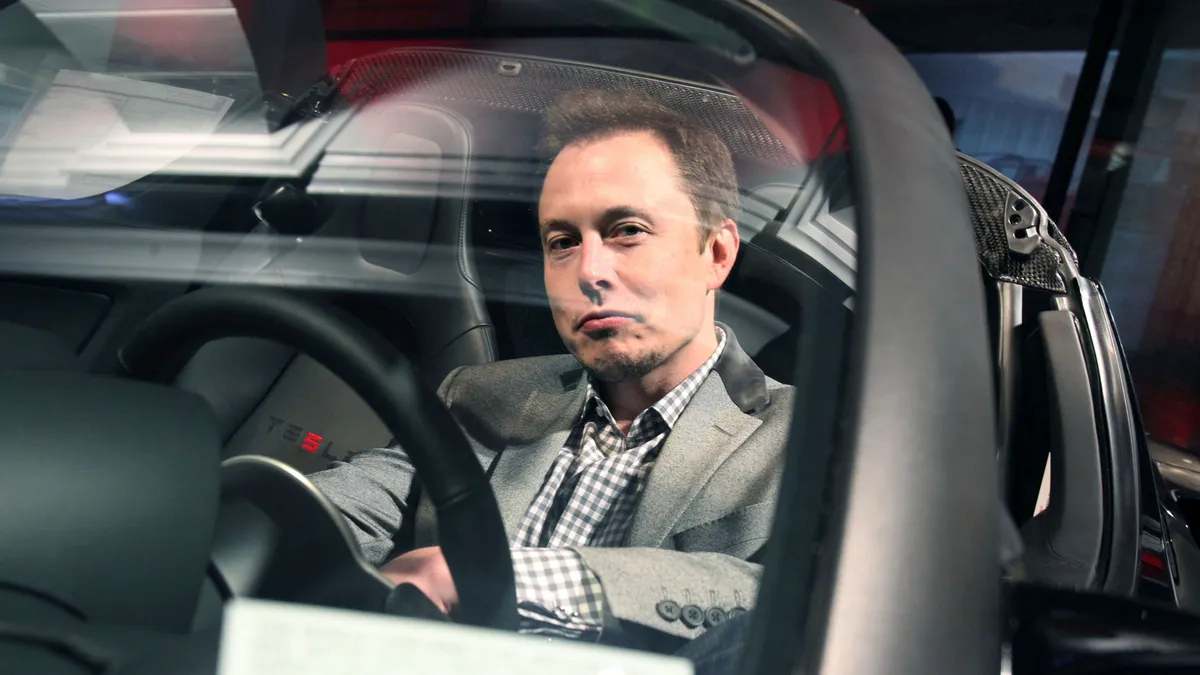Dive Brief:
-
Tesla CEO Elon Musk told shareholders at a June 5 meeting that he expects the company will break through the $100/kWh barrier for lithium-ion cell costs later this year.
-
Musk also said Tesla would break the $100/kWh barrier for battery packs within two years.
- Musk said Tesla has installed 1 GWh of energy storage projects worldwide and will soon install another 1 GWh.
Dive Insight:
Elon Musk has a penchant for big announcements. During a conference call with analysts in May, he said Tesla would announce a "gigawatt-hour-scale" energy storage project in a matter of months. A project of that size would equal the scale of all the energy storage projects Tesla has deployed since 2015.
On Tuesday, during a meeting with shareholders, Musk said his company is close to breaking through the $100/kWh barrier for lithium-ion battery cells — an equally ambitious target. If achieved, it could be a contributing factor in greater EV and storage adoption, but some analysts are uncertain about timing.
"We're unsure $100/kWh is achievable this year," Mitalee Gupta, an energy storage analyst at GTM Research, told Utility Dive.
GTM uses rack prices, not cell prices, in its estimates for stationary energy storage prices and puts rack prices for 2018 at around $207/kWh. That implies a cell price lower than $207/kWh because cells are combined into packs and then into racks. GTM does not make its cell price forecasts public.
While lower cell costs translate into lower costs for packs, it is not a direct pass through. At the pack level, cell costs comprise 75% of costs, Gupta said. At the rack level, cell costs account for even lower percentage of overall costs since battery rack prices also include items such as battery management software, packaging and electronics.
Gupta also noted that Musk's claim was not very specific. It is unclear, for instance, if the $100/kWh number is for materials only or if it allows for any profit.
Nonetheless, cell prices are still a primary driver of overall energy storage costs, and the main driver of cell price declines is the growth of electric vehicles. It is very clear that the majority of demand for batteries is coming from electric vehicle sales, Gupta said. And "the energy storage industry has been able to ride that cost curve."
There, again, Tesla and Musk, are pushing to expand the market and to keep his promises. Tesla missed its April EV production numbers and now Musk is promising to produce 5,000 Model 3 cars a week by the end of June, up from a current level of about 3,500.
In Tuesday's shareholder meeting, Musk said he was a "naturally optimistic person" and acknowledged that he has a problem with time and does not always meet his promises on schedule. "This is something I am trying to get better at," he said.
Tesla shares rose almost 10% on Wednesday as Musk also survived a shareholder attempt to remove the chairman part of his dual CEO and chairman role at Tesla, Axios reported.














